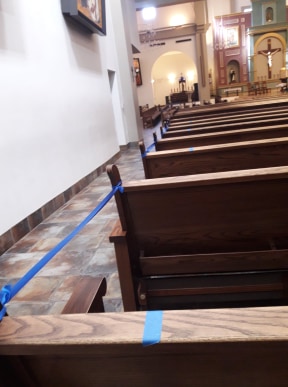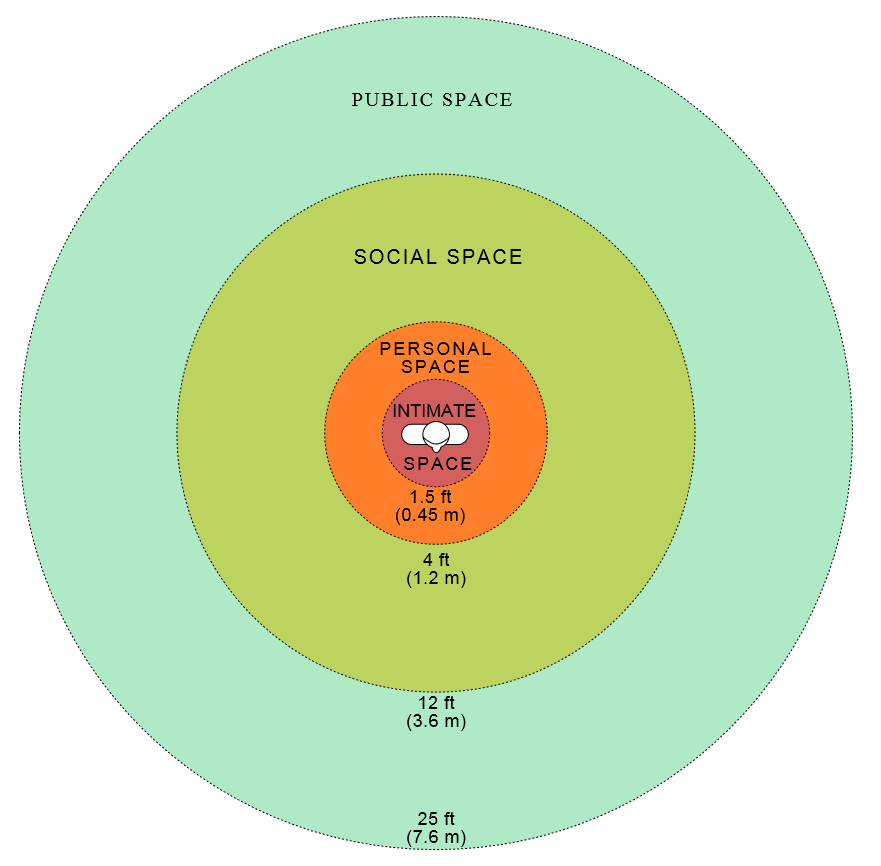On Wednesday, May 6, 2020, we went out early for marketing to procure our daily household needs. We have to arrange our tasks to organize our trip while still aware of COVID19 hustles. As of writing, the news flashed in my phone, saying, “there were 572 coronavirus cases in Arizona yesterday.” This news update was on May 8, 2020.
The first stop we have was at St. Thomas Aquinas Catholic Church, our parish at Avondale, Arizona. We need to drop the pledge to the dropbox at the usual location near the parish office. Since celebration of the Holy Mass was suspended for a time being, to date, the norm for the presentation of gifts during the Holy Mass is not yet possible.
Parking near to the entrance of the church was so fast and convenient. The parking lot was so vast, with only more or less ten (10) cars occupying the bays to my sight. Knowing that on a regular Sunday mass schedule, this parking lot is full, and coming late, possible parking could be found away from the church.
We knew that the church is open for parishioners who would like to visit the Blessed Sacrament for adoration. After my wife has done with the dropbox, we proceeded to the church. Upon entering, I noticed a cart full of pieces of cleaning equipment parked at the entrance door of the church. When I saw the same cleaning lady moving around holding cleaning tools, I was guessing that the church was on a maintenance for the COVID19 sanitation routine.
The set up for communion service last Sunday mass was still in place in the narthex. Two automated dispensing sanitizers, square tables, and kneelers each group in different locations.
Preparing for the next
The double-leaf interior doors toward the nave were already open swing-out swing-out position to the narthex. That was practically favorable to the visitors to avoid grabbing any of the handles. Seeing those looking mounted metal handles suddenly reminds me of my readings that coronavirus can survive on metal glass for as long as nine days.
Soon I reached the space at the rear portion of the nave, I proceeded at the left side only to my surprise to see the pews had blue-colored (more or less 1 inch ), and silky fabric strap tied up to the side support of each bench. Each pew for available seating has a distance of two (2) seats in between. There are markings on the backrest a pew for seating with a range of approximately 2.80 meters in between. With four (4) 2.80 meters distance, I concluded that the length of each bench in the central nave could be 11 to 12 meters.

Since I have no measuring device, I only guess these distances between each mark by counting seven pieces of floor tiles, each with 0.40 x 0.40 meters wide, which I am familiar with. There are blue colored sticker-tapes probably an indication of a seat location of each person.
Possibly this attempt is a continuation of the last Sunday’s (May 3, 2020) Holy Communion made after the mass (Read: Desire for Eucharistic Communion Over COVID19 risk -Part II). As mentioned by our priest Fr. John, on YouTube, the giving of Holy Communion is a “little baby step forward,” while asking for patience and understanding of the parishioners to “move along in the different preparatory phases of reopening the church for public worship.”
“Proxemics”
With the assumed length, in my mental calculation, the pews could accommodate an average capacity of 12 to 14 persons if the space factor per person has more or less one meter (1.00 m). The present distance in the layout mentioned could practically accommodate 5 (five) persons per pew, with two (2) persons on the extreme sides, and three (3) persons in the middle with equal distances. Eventually, doing the math, possible seating occupancy would be reduced to 35-40 % instead of 12-14 persons.
Our lessons on the subject of Architectural Design while in college flashed in my mind. My professor Architect Emiliano Varon’s advice was 25% of the area could be a standard allocation (although may vary) for circulatory spaces. This input helped me gauge to figure out areas for the space programming process or in the assessment of actual spaces. I remember my professor during my third-year Architecture course Arch. Jose Dureza discussed “Proxemics .”
Still clear in my mind, Arch. Dureza just simply described proxemics as the “study on the science of crowding.”, mentioned the book “The Hidden Dimension” by Edward Hall as the author. Browsing Wikipedia refreshes my mind on proxemics defined as “the study of human use of space and the effects that population density has on behavior, communication, and social interaction.
There are four distinct zones according to Edward Hall: (1) intimate space, (2) personal space, (3) social space, and (4) public space.

- Intimate distance for embracing, touching or whispering
- Close phase – less than one inch (one to two cm)
- Far phase – 6 to 18 inches (15 to 46 cm)
- Personal distance for interactions among good friends or family
- Close phase – 1.5 to 2.5 feet (46 to 76 cm)
- Far phase – 2.5 to 4 feet (76 to 122 cm)
- Social distance for interactions among acquaintances
- Close phase – 4 to 7 feet (1.2 to 2.1 m)
- Far phase – 7 to 12 feet (2.1 to 3.7 m)
- Public distance used for public speaking
- Close phase – 12 to 25 feet (3.7 to 7.6 m)
- Far phase – 25 feet (7.6 m) or more.
We can see above, the classification of distances according to Hall. The interaction needed in social distancing has a minimum of 1.20 meters and a maximum of 2.1 meters for the close phase. In the far phase, the minimum is 2.1 meters, while the maximum is 3.7 meters.
The distances assigned for seating on every pew are under the far phase of the social space zone ( 2.10 meters to 3.70 meters) which is compliant to the social distancing of COVID19 standard protocol. Strict enforcement shall also need supervision, monitoring, review, and planning of every operation to make sure whatever threat of virus is addressed. But as long as the risks are always present, space management in churches pursuing liturgical celebration must always observe this COVID19 -driven Proxemics.




